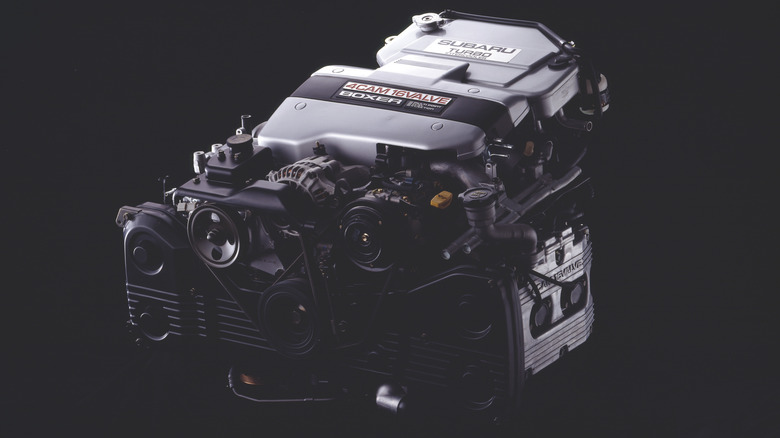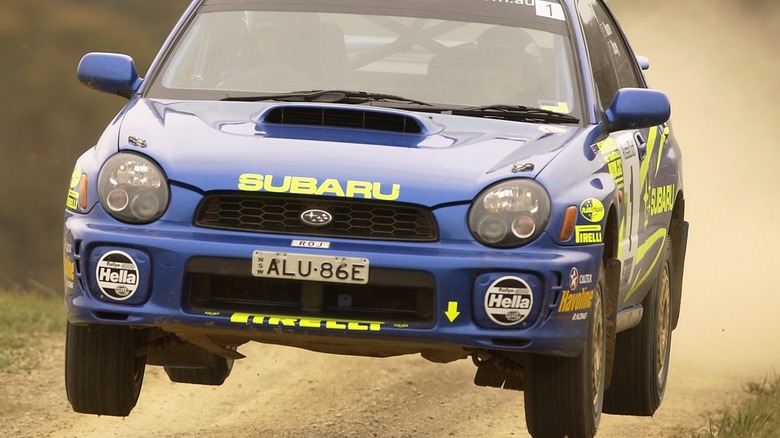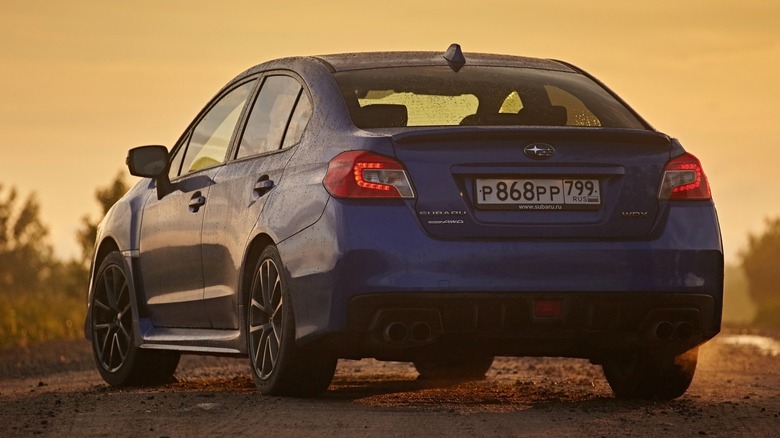Subaru's EJ20: Pros And Cons Of The Popular WRX Engine
The Subaru WRX is one of the most iconic cars of our time. The term "rally car for the road" is typically applied to it, and while that may be a bit of a heavy-handed description, it's not exceptionally far off. It's got Subaru's legendary symmetrical all-wheel-drive system, which did indeed help with numerous rally championships. On top of that, it has a five-speed manual transmission and, in pre-2020 model year examples, a turbocharged EJ20 engine like you'd find in many Subaru rally cars.
The EJ20 is a 2.0-liter boxer engine, meaning the pistons travel out and in horizontally relative to the crankshaft rather than up and down as they would in a typical inline engine setup. In the case of the WRX, the EJ20 comes with a turbocharger and, depending on the model year, up to 268 horsepower.
If you're familiar with the WRX, you've likely heard everything from blown head gaskets to ring land failure. Do these apply to the EJ20? Let's take a look at the pros and cons of this historic engine.
Pros: power, sound, and... reliability?
Perhaps the most outstanding feature of the EJ20 engine is its sound. The signature "Subie rumble" comes from a combination of the engine's layout and the unequal-length exhaust manifold assembly for the turbocharger. Unlike most four-cylinder engines, it has a low rumble that ascends into a growl as you make your way through the RPMs. When you hear a Subaru engine, there's no doubt that you're hearing a Subaru engine. They're identifiable from miles away.
The second-generation Subaru WRX was the first one to land in the United States. Often referred to as the "Bugeye" model because of its round lights, it had 227 horsepower. While that may not seem like much by today's standards, it's worth remembering that it's more power than an equivalent model year Audi A4 had. The 2019 WRX was the final year that Subaru utilized the EJ20, and it had 268 horsepower.
Contrary to what you might hear, the EJ20 engine is quite reliable. In truth, the issues you hear about, namely head gasket failure, are largely only an issue on the 2.5-liter EJ engine found in the WRX STI. The EJ20's thicker cylinder sleeves and superior cooling to the EJ25 make it far less likely to have this failure. In the case of the EJ20, it's like most engines. Take good care of it, and it'll take good care of you.
Cons: fuel economy and issues
Setting aside the above thinking, as with any older engine, there are some issues to watch out for. Most pertinently, the EJ20 tends to consume oil in a turbocharged format. Piston rings can become stuck, allowing oil to pass through into the combustion chamber. Frequent oil changes with a high-quality synthetic oil can prevent this from happening. Getting a ring unstuck is not an easy task and often requires the engine to come apart. In a Subaru, that means the engine needs to come out.
The EJ20 is certainly not known for its fuel economy, either. The newest models saw the best fuel economy numbers, with ratings of 21 mpg city and 27 mpg highway. Older models saw similar highway results with city mpg ratings as low as 18. It's definitely not the worst, but it's not phenomenal for a four-cylinder engine.
There are a couple of other issues to keep an eye on, too. As with most older engines, eventually, seals start to give out. A common seal failure for the EJ20 is the camshaft seals and valve cover gaskets. However, since the cylinder heads are horizontal in the engine bay, they're fairly difficult to replace. Finally, some EJ20s suffer from overheating in cylinder four, leading to rod knock. This also requires an engine rebuild but can be prevented by properly maintaining (or even upgrading) the cooling system.


